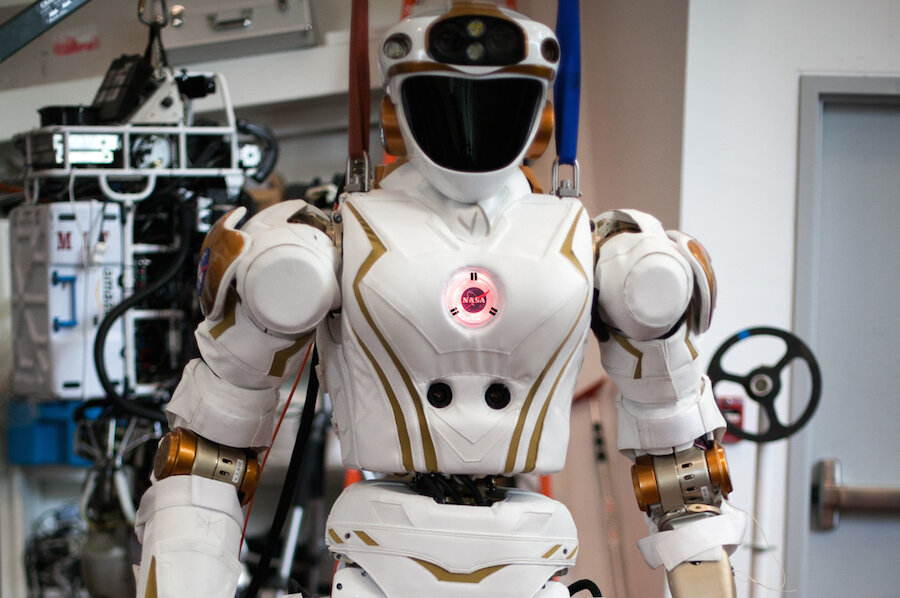AI upgrade from MIT, Northeastern gets NASA robot ready for space
Loading...
Man-machine collaboration could reach new heights far from home, as humanoid robots show potential for deep-space travel.
NASA has sent prototype robots to two university groups for further research and development. Initially designed for disaster relief during a previous robotics challenge, the R5 robots could someday be among the first to demonstrate humanoid robot models' usefulness for distant space missions, the space agency suggests.
"Advances in robotics, including human-robotic collaboration, are critical to developing the capabilities required for our journey to Mars," Steve Jurczyk, associate administrator for the Space Technology Mission Directorate (STMD) at NASA Headquarters, said in a press release. "We are excited to engage these university research groups to help NASA with this next big step in robotics technology development."
NASA selected Northeastern University and Massachusetts Institute of Technology through a competitive process open to groups who participated in the Defense Advanced Research Projects Agency (DARPA) Robotics Challenge.
"Frankly, we thought that it would be difficult to get both robots in Boston, but that says something about how big of a powerhouse Boston is in robotics," Taskin Padir, an associate professor of engineering and a principal investigator at Northeastern University, said in a phone interview with The Christian Science Monitor. "It's a big deal. We're very happy and the students are excited."
The universities' proximity to each other will likely help the new project's collaborative tone. Despite spinning off from the DARPA Robotics Challenge, the new research and development project is aimed at building a community to advance the science and technology behind humanoid robots.
The plan is to get the R5s ready for deployment on missions to Mars and beyond. When human astronauts are sent on the upcoming Mars missions and other missions to distant worlds, they won't be staying just a few days. It could take years for them to study an alien world, and ensuring they have the resources to survive will require a lot of prep work.
Pre-deployment missions are planned to send up habitats, equipment, and other necessities before the astronauts arrive. But the need to launch equipment years before astronauts use it could cause problems.
"I ask my students, 'What happens when you don't start your car for two years – do you think it will just start right back up?'" Dr. Padir explained. "[Robots] can maintain and repair equipment" until humans arrive.
But before they can do that, humanoid robotics will need to advance significantly to be ready for deployment in the 2020s. The university groups will be working on advancing the R5s' capacity for maintenance and deployment tasks.
Northeastern University will be focused on developing better motion control, performance when grasping unknown objects, and human-robot interactions.
MIT's Computer Science and Artificial Intelligence Laboratory (CSAIL) will focus on similar topics, but also hopes to improve the robots' ability to perform tasks without human instruction.
"Our work is about vetting the robot and seeing what it is capable of," Russ Tedrake, principal investigator for the MIT team, says in a press release. "If we can integrate the autonomy work with our planning and control algorithms, it could result in an unprecedented level of autonomous capabilities for a humanoid robot."
The two R5s will eventually be part of another robotics competition, the upcoming Space Robotics Challenge, where other universities will be tasked with using the upgraded bots to perform physical tasks, according to NASA.








